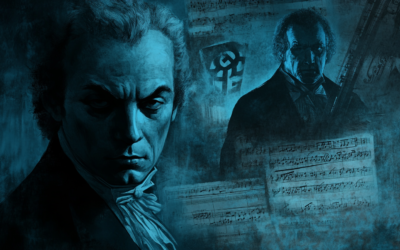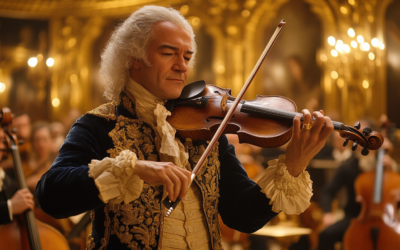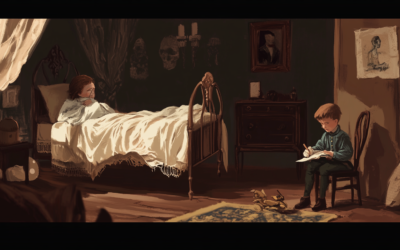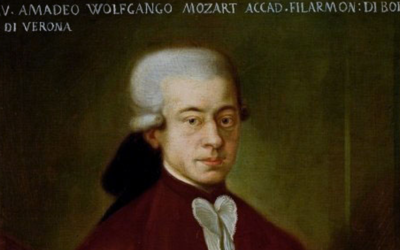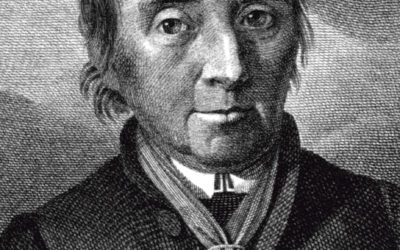The Unveiling of Symphony K.16
A Mozart Myth Dismantled
The Symphony No. 1 in E-flat major, K.16, attributed to young Wolfgang Mozart, reveals the complex truth behind his early compositions. Far from the prodigious work of an eight-year-old, it is instead a product of substantial parental intervention and musical simplification.
Mozart: The Fall of the Gods
This book offers a fresh and critical look at the life of Wolfgang Amadeus Mozart, challenging the myths that have surrounded him for centuries. We strip away the romanticised image of the “natural genius” and delve into the contradictions within Mozart’s extensive biographies. Backed by nearly 2,000 meticulously sourced citations, this work invites readers to explore a deeper, more complex understanding of Mozart. Perfect for those who wish to question the traditional narrative, this biography is a must-read for serious music lovers and historians.
“The original, more sophisticated musical passages were simplified by Leopold, possibly to align with the expectations of an infant prodigy.”
Mozart: The Fall of the Gods
Mozart’s Symphony No. 1 in E-flat major, K.16, long celebrated as a testament to his prodigious talent at just eight years old, reveals a much less straightforward reality. This symphony, attributed to the young Wolfgang Amadeus Mozart, is often paraded as evidence of his exceptional abilities. However, a closer examination suggests a more complex and less flattering picture.
The K.16 manuscript, bearing the title written by Mozart’s father Leopold, was intended to showcase Wolfgang’s early compositional prowess. Yet, historical accounts, including those from Mozart’s sister Nannerl, hint at significant doubts about the authenticity of this narrative. Nannerl’s memoirs recount a period in London when Wolfgang was supposedly barred from the piano due to Leopold’s illness, leading to the composition of this symphony. However, the evidence points to Leopold’s extensive involvement in both the composition and the final version of the piece.
The manuscript reveals several inconsistencies and peculiarities. For instance, while Nannerl claimed the symphony was intended to feature prominent parts for trumpets and timpani, these elements are notably absent in the K.16. Furthermore, the music’s complexity seems incongruous with the supposed abilities of an eight-year-old. The original, more sophisticated musical passages were simplified by Leopold, possibly to align with the expectations of an infant prodigy.
Leopold’s influence is evident in the extensive corrections and alterations found in the manuscript. Rather than a product of youthful genius, K.16 appears to be a heavily edited work, with Leopold’s modifications aimed at making the music more suitable for a young child’s capabilities. This includes removing intricate imitations and simplifying harmonies to ensure they fit the narrative of Wolfgang’s prodigiousness.
Moreover, Mozart’s ability to compose intricate music without a keyboard—suggested by Nannerl’s accounts—seems questionable. Adult Mozart himself struggled with composition when not in proximity to a keyboard, raising further doubts about the symphony’s origins.
The true nature of K.16 reflects a collaborative effort, with Leopold playing a significant role in shaping the symphony to fit his son’s alleged talent. The work is less a demonstration of an eight-year-old’s genius and more a product of parental intervention and musical simplification.
You May Also Like
Mozart, the Anschluss, and Nazi Propaganda
Following the 1938 Anschluss, the Nazi regime rebranded Mozart as the quintessential German composer, using his image to promote unity between Austria and Germany. The Salzburg Festival became a platform for Nazi propaganda, distorting Mozart’s legacy to fit their nationalistic and racial agenda.
The Violin Concertos: Mozart’s Borrowed Genius
Mozart’s violin concertos are often celebrated as masterpieces, but how much of the music is truly his? This article delves into the complexities behind the compositions and challenges the authenticity of some of his most famous works, revealing a story of influence, imitation, and misattribution.
#2 The Hidden Truth of Mozart’s Education
In this video, we uncover the hidden truth behind Wolfgang Amadeus Mozart’s early education and challenge the long-held belief in his effortless genius. While history often celebrates Mozart as a child prodigy, effortlessly composing music from a young age, the reality is far more complex.
The London Notebook
The London Notebook exposes the limitations of young Mozart’s compositional skills and questions the myth of his early genius. His simplistic pieces, fraught with errors, reveal a child still grappling with fundamental musical concepts.
The Mozart Question
In this revealing interview, we delve into the lesser-known aspects of Wolfgang Amadeus Mozart’s life, challenging the long-standing myth of his genius. A Swedish journalist explores how Mozart’s legacy has been shaped and manipulated over time, shedding light on the crucial role played by his father, Leopold, in crafting the career of the famed composer.
Georg Nissen and the Missing Notebooks
After Mozart's death, his widow, Constanze, found a steadfast partner in Georg Nikolaus von Nissen, a Danish diplomat who dedicated his life to preserving the composer's legacy. Nissen not only compiled an extensive biography of Mozart but also uncovered and...


